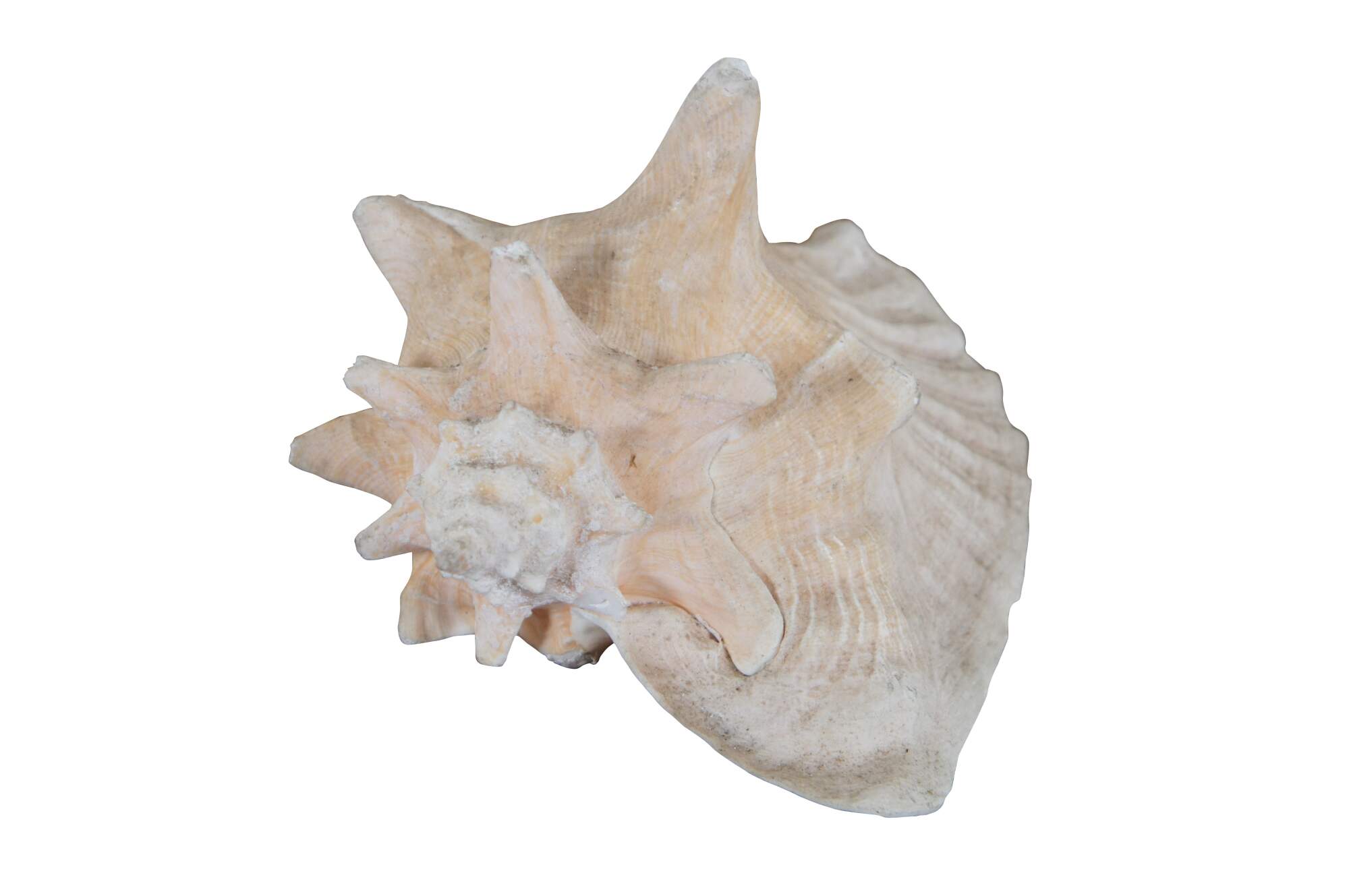
Shipping:
Free Shipping Included
Delivery:
Estimated 2-15 Business Days
Payments:
Credit Card, Check, Cash, PayPal, Apple Pay, Venmo
Returns:
30 Days 100% Money Back Guarantee, Buyer Pays Return Shipping
Description
Rare marked mid century natural Queen Conch sea shell (Aliger gigas) souvenir from Marine Arena Johns Pass Florida. Off white with a slight flush of coral-pink. Nautical, Maritime, beach decor.
"Jack Hurlbut opened Marine Arena at Johns Pass (Florida) on July 4, 1953. Located a few steps from the original 1927 Johns Pass bridge, this attraction featured a variety of marine life, including Paddy the Porpoise in the early 1960s. During the busy tourist season, Marine Arena offered 3 porpoise shows a day. Marine Arena closed in 1965, shortly after the larger Aquatarium opened near 64th Avenue in St. Pete Beach. The Johns Pass Aquarium briefly operated there during the late 1970s." (Source: The Gabber - Historic Roadside Attractions on Madeira Beach)
"Aliger gigas, originally known as Strombus gigas or more recently as Lobatus gigas, commonly known as the queen conch, is a species of large sea snail, a marine gastropod mollusc in the family of true conches, the Strombidae. This species is one of the largest molluscs native to the Caribbean Sea, and tropical northwestern Atlantic, from Bermuda to Brazil, reaching up to 35.2 centimetres (13.9 in) in shell length. A. gigas is closely related to the goliath conch, Lobatus goliath, a species endemic to Brazil, as well as the rooster conch, Aliger gallus.
The queen conch is herbivorous. It feeds by browsing for plant and algal material growing in the seagrass beds, and scavenging for decaying plant matter. These large sea snails typically reside in seagrass beds, which are sandy plains covered in swaying sea grass and associated with coral reefs, although the exact habitat of this species varies according to developmental age. The adult animal has a very large, solid and heavy shell, with knob-like spines on the shoulder, a flared, thick outer lip, and a characteristic pink or orange aperture (opening). The outside of the queen conch is sandy colored, helping them blend in with their surroundings. The flared lip is absent in juveniles; it develops once the snail reaches reproductive age. The thicker the shell's flared lip is, the older the conch is. The external anatomy of the soft parts of A. gigas is similar to that of other snails in the family Strombidae; it has a long snout, two eyestalks with well-developed eyes, additional sensory tentacles, a strong foot and a corneous, sickle-shaped operculum.
Its shell is sold as a souvenir and used as a decorative object. Historically, Native Americans and indigenous Caribbean peoples used parts of the shell to create various tools.
International trade in the Caribbean queen conch is regulated under the Convention on International Trade in Endangered Species of Wild Fauna and Flora (CITES) agreement, in which it is listed as Strombus gigas. This species is not endangered in the Caribbean as a whole, but is commercially threatened in numerous areas, largely due to extreme overfishing." (Source: Wikipedia)
Condition
Good Overall - Gentle wear
Dimensions
8.25" x 7.25" x 5.5" (Width x Depth x Height)